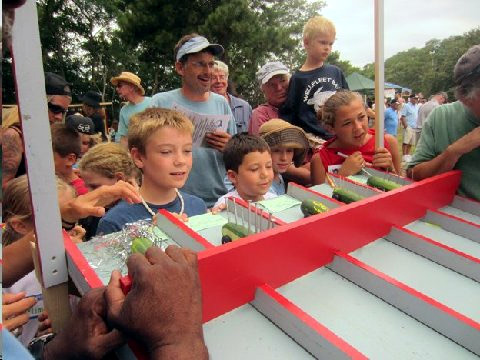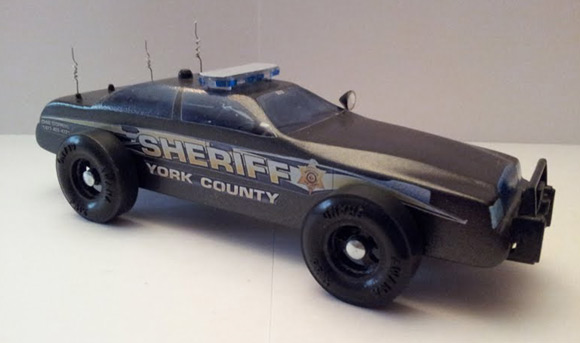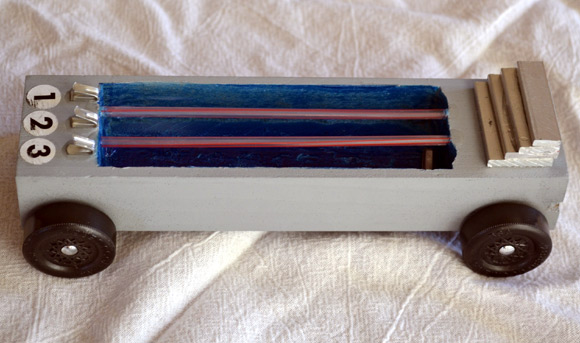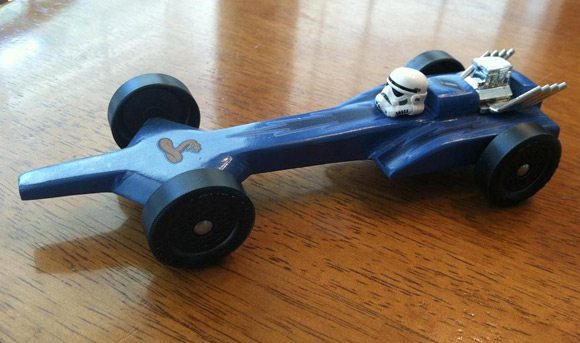
Standard Assimilator


Extended Assimilator
 Standard Assimilator |

|
 Extended Assimilator |
Editor's Notes
Truro, MA - You've heard of the Indy 500 over Memorial Day, but what about Truro's Zucchini 500 over Labor Day? Billed as The Greatest Spectacle in Vegetable Racing, the event took place on Sunday, September 2 at Sustainable CAPE's Truro Agricultural Fair in Truro Center. Participants were encouraged to harvest (or buy locally) their own zucchinis and create their own race cars. There were ribbons awarded for the largest, smallest and best decorated and embellished zucchinis. A limited number of axles, wheels & zucchinis were available for children who wished to create race cars on-site on a first-come, first-served basis. There were several groupings of racers: ages 5-7, 8-13, 14-18 and adult. Adults had to bring their own completed zucchini race cars as the supplies were donated for children. "The Zucchini 500 helps make vegetables fun," explains Sustainable Cape's founder Francie Randolph. "Our primary aim is to link local food to physical health and sustainable environmental practices. The Truro Ag Fair, Children's Community Gardens and 4-H programs, our Farm-to-School initiatives and our new Zucchini 500 all work together to make fruits and vegetables the center of wonderful memories and experiences for kids and adults. Fruits and veggies then become something we all want more of." In addition to the Zucchini 500, the Truro Ag Fair - whose tag line is "Till, Baby, Till!" - featured Turnip Bowling, Harvest Contests, Barnyard Beauty Contests for farm animals (with a Fava Bean voting booth), Pie-baking Contests and Pie-Eating Contests. A central Harvest Market offered local delicacies ranging from heirloom tomatoes to honey, fresh baked goods to oysters. Local restaurants grilled up regional fare. More can be found at TruroAgFair.com. One Z-500 entry per participant only, personally delivered and registered by entrant. A zucchini must be the main part of the entry and may be decorated, carved, painted or embellished. Each entry must be self-propelled - no motors or additional assistance. The overall width including wheels should be no wider than 7 inches. Each entry (zucchini and wheels) will be weighed upon entry and raced with comparable entries of similar weight in their class. The all new 25 foot racetrack was created and staffed with the assistance of MidCape Lumber, Bob Spitzler, Barnstable County 4-H, and Young & Fancy Signs. A former USDA official consulted on raceway design. Loads of people have extra zucchinis at this time of year - why not race them and then make zucchini bread?! |
|
 
If you are planning a race and are not required to use a specific kit type, our MV Basic or Wedge Car Kit are just what you need. These attractively priced kits are equipped with:
|
One or more workshops - By having the official scale available at a workshop, many of the participants will be able to adjust the weight of their cars which will minimize the amount of adjustments that will need to be made at the weigh-in.
Clear and complete rules - A good set of rules minimizes problems at the weigh-in. Unclear rules lead to confusion, arguments, and unnecessary stress on all involved. Make sure that all items specified in the rules will be inspected, and no inspection will occur for non- documented items.1
Weigh scales - I recommend one official scale, and one or more non- official scales (at least as accurate as the official scale). The non- official scales are used by racers to adjust the weight of the car. Then the car is weighed on the official scale before impounding.
Official measuring devices - To check the car for compliance. These usually include a car body gauge and possibly a wheel gauge.2 Make sure that gauges are available for checking all specifications identified in the rules.
Tools - small screwdrivers (for removing and attaching underbody weight plates), 2 or more drills (for adjusting weight), pliers (for breaking weight plates), hacksaw (for cutting zinc rods), level (to make sure the scale is level).
Supplies - lubricant, extra wheels, extra axles, weights (possibly screw-on zinc plates - these can be sold to parents as needed), and stickers (or permanent markers) to number cars. We use a black and silver permanent markers, and write the car number on the bottom-front of the car (black for light-colored cars, silver for dark-colored cars).
Tables - Enough for each weigh-in station and for holding the impounded cars. Make sure the tables are stable and solid. The impound tables should be isolated so that only inspection officials have access.
Car Immobilizers - The impound tables need something to prevent the cars from rolling. Inexpensive commercial solutions are available, such as the DerbyStop3, or you can create your own solution using thick cords or wood slats taped lengthwise on the table (cars are placed perpendicular to the cord or wood).
Registration Station - To register the owner (or verify the pre- registration).
Inspection Station - To verify the compliance of the car to the rules.
Repair Station - For owners to fix non-compliance issues.
Weight Adjustment Station - For making gross weight adjustments - A non-official scale is located at the station for use by car owners. Using this non-official scale reduces congestion at the Weigh Station. Since car owners may be drilling lead at this station, it should be located in a place where lead fragments can easily be collected for disposal.
Lube Station - For applying lubricant - Since graphite will be flowing, it should be located outside if possible.
Official Weigh Station - Location of the official scale (make sure it is not under an air duct or in a draft) - Once the car passes weight, the car is impounded.
Inspection station - The worker(s) need to be familiar with the rules, with the appearance of the wheels/axles in the car kit, and the use of the inspection devices. They also need a list of items to check for.
Official Weigh Station - The worker needs to be familiar with using the scale, and have a procedure to follow (e.g., blow debris off scale, zero scale, weigh car). Also, a time duration should be established as to how long the car will sit on the scale before declaring it is compliant (some scales fluctuate, so I recommend a 5 second count before the weight is considered official).

|
--New-- Paint Stand: 10% Off --New-- |

|
Allows you to hold the car in any position while painting.




Wood tracks tend to be rougher. An aggressively rear-weighted car may be unstable on a wood track. Also, the center guide rail may be rough, so the rail-riding technique may not work as well.
Aluminum tracks tend to be very smooth so aggressive rear-weighting is usually a key to performance. Rail-riding is also a big help.
Plastic tracks can have center or side lane guides. Plastic tracks with center guides are generally treated the same as aluminum tracks. Plastic tracks with side guides can lead to problems with wheels that have raised lettering. Removing the lettering may be helpful.
Track length also affects performance. For short (32-45 feet), aggressive rear-weighting is usually the winning strategy. For longer tracks, the balance point needs to be made less aggressive.
